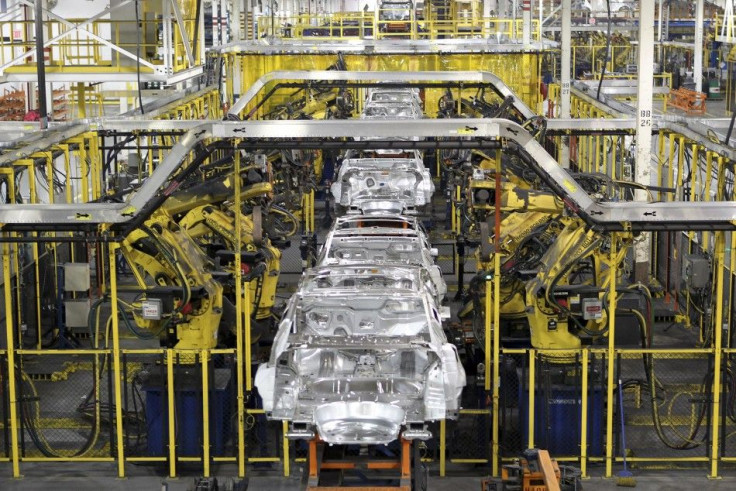As Democrats, GOP Spar, U.S. Economy Weakens
Analysis

U..S. gross domestic product (GDP) increased a tepid 1.3 percent in the second quarter, the U.S. Commerce Department announced Friday, and the agency also lowered its first quarter estimate to a scant 0.4% gain, down from the previously-estimated 0.7% rise.
The two stats indicate that the U.S. economy has hit more than a 'soft patch': it's barely growing and is in danger of falling back into a recession -- this after the worst recession since the Great Depression of the 1930s.
A Bloomberg survey had expected second quarter GDP to rise 1.9 percent.
In current dollar terms, U.S. GDP increased 3.7% or by $136.0 billion to $15.0 trillion in the second quarter.
The primary culprits in the growth slowdown in the second quarter? Weak consumer spending, austerity measures that by state and local governments that cut both spending and jobs, and weak overall job growth and income growth.
Also concerning, the core-PCE Index, closely-watched by the U.S. Federal Reserve as an indicator of long-term inflation, increased at a 2.1 percent annual rate in the second quarter. That suggests long-term core inflation, which excludes the often-volatile food and energy component, is starting to tick up. As a result, the Fed may start to view inflation as a concern, and think in terms of starting to tighten monetary policy, i.e raise short-term interest rates.
What's more, revisions to GDP statistics indicate that the 2007-2009 Great Recession was more severe than the Commerce Department first estimated. The U.S. economy contracted 5.1 percent from the fourth quarter of 2007 to the second quarter of 2009.
"This is the worst of all worlds for investors, certainly the worst of all worlds for the Fed," John Silvia, chief economist at Wells Fargo Securities LLC in Charlotte, North Carolina, said in an interview on Bloomberg Television. "A little too much inflation, not enough growth, that is a tough scenario in the U.S."
Economic Analysis: No sense mincing words -- the second quarter report was a disappointment on nearly all fronts. Growth in the second quarter is well below adequate, and in the first quarter it was at near-stall levels.
What's more, over the past two years GDP growth has averaged 2.5 percent -- not nearly fast enough to create the 150,000 to 200,000 new jobs needed per month to consistently and substantially reduce the awful U.S. unemployment rate, which is 9.2 percent.
Further, the U.S. needs stimulus, but Congress is in belt-tightening mode -- and that tack will be a tragic mistake if Congress cuts federal spending too much, too soon: it will sap an already tepid economic recovery. Congress should go slow on early-year deficit reduction efforts and place the big cuts in Years 3,4,5 and 6 etc. In that way, Congress willl help maintain demand in the system and give the economy some chance to gain GDP traction.
© Copyright IBTimes 2024. All rights reserved.





















